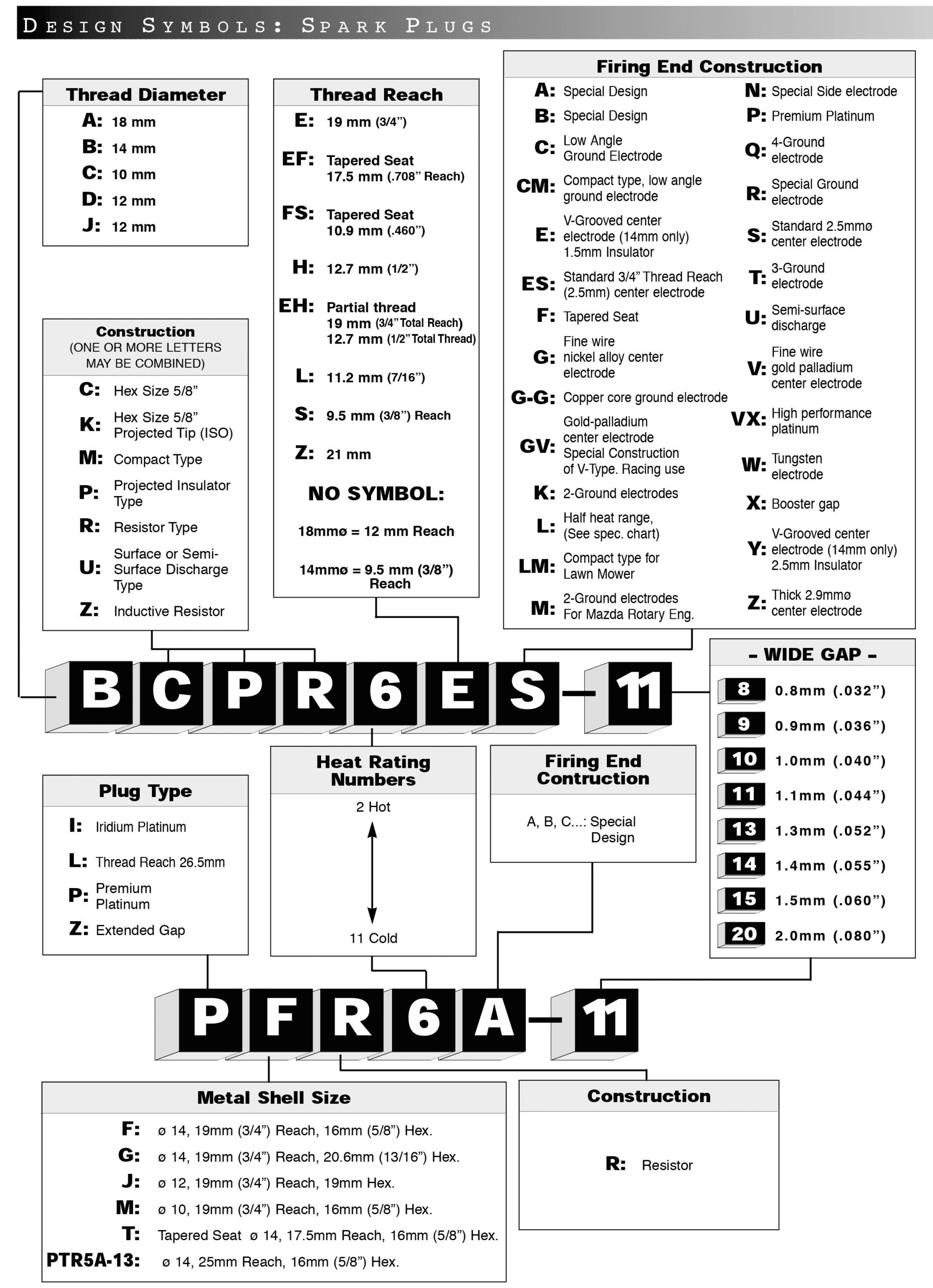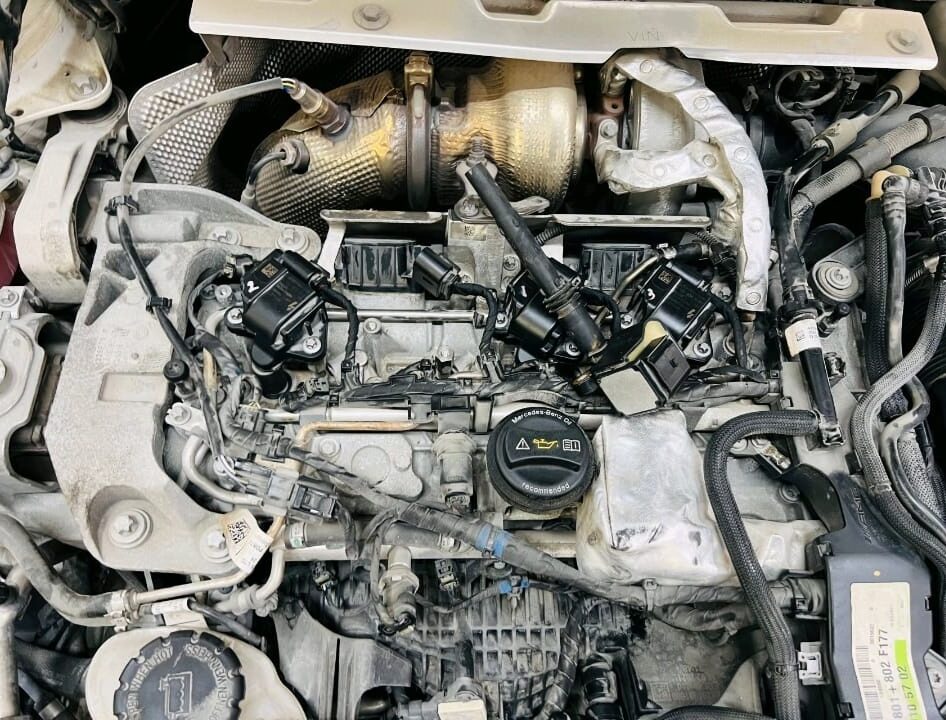The motorcycle NGK spark plug chart helps you find the right spark plug based on your bike’s specifications. It includes details like thread size, reach, and heat range to ensure optimal engine performance.
When it comes to maintaining your motorcycle, one of the most important components that ensures the engine runs smoothly is the spark plug. As a beginner, understanding which spark plug works best for your motorcycle can be overwhelming, especially when you’re faced with an array of choices. Fortunately, NGK, one of the most trusted names in spark plug manufacturing, offers a comprehensive spark plug chart to help you make the right decision.
This guide will walk you through the intricacies of NGK spark plugs, including how to read their numbering system, the significance of their heat range, and how to choose the best spark plug for your bike.
Contents
- 1 What Are NGK Spark Plugs?
- 2 Why Choose NGK Spark Plugs?
- 3 The Importance of Understanding the NGK Spark Plug Numbering System
- 4 NGK Motorcycle Spark Plug Application Chart
- 5 NGK Spark Plug Heat Range Explained
- 6 NGK Spark Plug Upgrade Options
- 7 How to Choose the Right NGK Spark Plug
- 8 Frequently Asked Questions
- 9 Conclusion
What Are NGK Spark Plugs?
The spark plug is a critical component in your motorcycle’s engine that helps ignite the fuel and air mixture in the combustion chamber, ensuring the engine operates efficiently. NGK spark plugs are highly regarded for their superior quality and performance, designed to last longer and provide consistent performance even in demanding conditions.
NGK has a global reputation for creating spark plugs that deliver reliable ignition. Their spark plugs are manufactured with advanced materials like iridium, platinum, and copper, each offering specific advantages depending on your engine’s needs.
Why Choose NGK Spark Plugs?
When it comes to choosing the right spark plug for your motorcycle, NGK stands out due to its reputation for quality, reliability, and performance. With a wide range of options tailored to various engine types, NGK spark plugs ensure your motorcycle runs smoothly and efficiently.
1. Reliability
NGK spark plugs are renowned for their reliability. Designed to deliver stable ignition, they prevent misfires, which can lead to poor engine performance and increased fuel consumption. Whether you are commuting on a daily basis or riding on rugged terrains, NGK ensures your engine runs smoothly.
2. Durability
NGK spark plugs last longer than many competitors. Their innovative materials, such as Iridium, increase the lifespan of the spark plug, minimizing the need for frequent replacements. This not only saves you money but also keeps your motorcycle in top condition for longer.
3. Performance
For motorcycle enthusiasts, engine performance is paramount. NGK spark plugs provide improved acceleration, better throttle response, and enhanced fuel efficiency, which is crucial for both casual riders and competitive racers.
The Importance of Understanding the NGK Spark Plug Numbering System
NGK spark plugs come with a specific numbering system that helps identify the exact specifications of the plug. This numbering system is crucial because it provides a quick reference to determine the spark plug’s characteristics, such as heat range, material composition, and electrode type. Let’s break down the system so you can better understand how to read the NGK part numbers.
NGK Spark Plug Part Number Example: BPR6EIX
An NGK spark plug part number typically follows this format: [Letter + Number + Letter + Number + Letter]. Let’s decode the part number “BPR6EIX”:
- B: Thread Diameter – 14mm
- P: Construction Type – Projected insulator type
- R: Resistor Type – Helps reduce electromagnetic interference (EMI)
- 6: Heat Range – Medium (with lower numbers indicating hotter plugs and higher numbers for colder plugs)
- E: Reach – 19mm
- IX: Type – Iridium IX spark plug
This breakdown helps you identify the specifications and compatibility with your engine’s needs.
NGK Motorcycle Spark Plug Application Chart
One of the best ways to select the right NGK spark plug for your motorcycle is by referring to the NGK motorcycle spark plug application chart. This chart provides a list of recommended spark plugs for a wide range of motorcycles. It’s designed to help motorcycle owners and mechanics identify the correct spark plug based on their motorcycle’s make and model.
The chart is detailed, listing key specifications such as:
- Thread size: Refers to the diameter of the spark plug’s threaded section.
- Reach: Describes the distance from the tip of the spark plug to the point where the spark plug makes contact with the engine.
- Heat range: Indicates how well the spark plug can dissipate heat. Lower heat range numbers indicate hotter plugs, suitable for low-performance engines, while higher numbers indicate colder plugs, which are used in high-performance motorcycles and racing engines.
- Electrode type: Describes the material and construction of the spark plug’s electrodes (e.g., Iridium, Platinum, Copper).
By referencing this chart, you can easily match your motorcycle’s engine type and requirements with the ideal spark plug.
NGK Spark Plug Heat Range Explained
One of the most important factors to consider when choosing a spark plug is the heat range. Heat range refers to a spark plug’s ability to dissipate heat from the combustion chamber. Choosing the correct heat range is essential to prevent spark plug fouling (from being too cold) or pre-ignition (from being too hot).
Hot Spark Plugs vs. Cold Spark Plugs
Understanding the difference between hot and cold spark plugs is essential for selecting the right one based on your motorcycle’s usage and engine type. This distinction affects your engine’s performance, efficiency, and longevity depending on your riding conditions.
- Hot Spark Plugs: These are designed to retain more heat and are ideal for short trips, stop-and-go riding, or city traffic. They are often used in standard motorcycles that don’t require high-performance ignition.
- Cold Spark Plugs: These plugs are designed to dissipate heat more rapidly and are used in performance motorcycles, racing engines, and motorcycles that experience high temperatures due to heavy-duty usage.
The NGK numbering system helps you identify whether a spark plug is hot or cold based on the heat range number. For example, a “6” indicates a medium heat range, while a “9” would be colder, suitable for high-performance engines. If you use a spark plug with an incorrect heat range, it can affect the engine’s performance and cause premature wear or damage.
NGK Spark Plug Upgrade Options
NGK offers several upgrade options for spark plugs, each offering specific advantages based on the type of riding you do. Here are a few NGK spark plug types:
1. Iridium IX
Iridium spark plugs are known for their superior performance and longevity. With a fine iridium tip, these plugs provide better ignitability, enhanced fuel efficiency, and longer service life. They are perfect for high-performance motorcycles that demand quick throttle response.
2. Platinum
Platinum plugs last longer than standard copper spark plugs and offer increased durability, making them an excellent option for riders who need reliability and longevity. They are suitable for most street motorcycles.
3. Laser Iridium
Laser Iridium spark plugs feature an even finer iridium tip than regular Iridium IX plugs. This offers even better anti-fouling properties and longer service life. These are often the choice for high-performance bikes and racing motorcycles.
How to Choose the Right NGK Spark Plug
Choosing the right NGK spark plug involves several considerations:
- Know Your Motorcycle’s Specifications: Always refer to the manufacturer’s guidelines to determine the recommended spark plug for your motorcycle.
- Consult the NGK Application Chart: This chart provides the ideal spark plug for a wide range of motorcycle makes and models, taking into account the engine’s needs.
- Consider the Riding Conditions: If you’re a casual rider, a standard spark plug may suffice. However, for high-performance motorcycles or those used in racing, Iridium or Platinum spark plugs are recommended.
- Check the Heat Range: Match the heat range of the spark plug to the conditions under which you ride.
Frequently Asked Questions
Here are some FAQs about motorcycle NGK spark plug chart –
1. How often should I replace my spark plugs?
Generally, it is recommended to replace spark plugs every 8,000 to 12,000 miles, but it depends on the type of spark plug and your motorcycle’s engine. Always consult your owner’s manual for specific recommendations.
2. Can I use any spark plug brand?
While other brands may be compatible, it is best to use NGK spark plugs as they are designed to provide optimal performance in motorcycles. Check the application chart to ensure compatibility.
3. What is the difference between Iridium and Platinum spark plugs?
Iridium plugs offer better performance and last longer than Platinum plugs. They are ideal for high-performance motorcycles, whereas Platinum plugs are suitable for most standard motorcycles.
4. How do I know which NGK spark plug is right for my bike?
Consult the NGK Motorcycle Spark Plug Application Chart. This chart lists the compatible spark plugs for various motorcycle models.
5. What is the heat range on a spark plug?
The heat range indicates a spark plug’s ability to dissipate heat. A higher heat range number means a colder plug, suitable for high-performance applications. A lower number indicates a hotter plug, ideal for standard engines.
Conclusion
Choosing the right NGK spark plug is essential for ensuring your motorcycle runs smoothly and efficiently. By knowing the NGK spark plug numbering system, consulting the application chart, and considering factors such as heat range and electrode type, you can select the perfect spark plug for your motorcycle. Proper spark plug selection leads to better engine performance, improved fuel efficiency, and a longer-lasting motorcycle engine.





